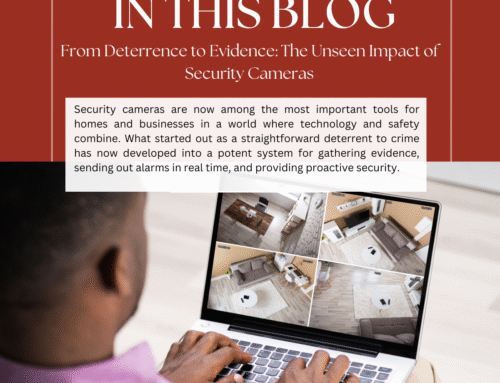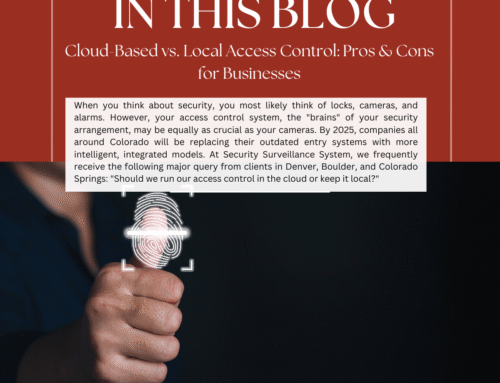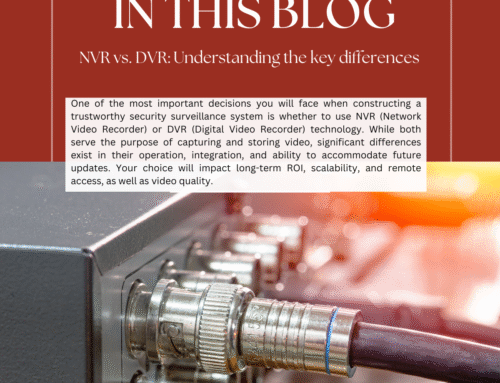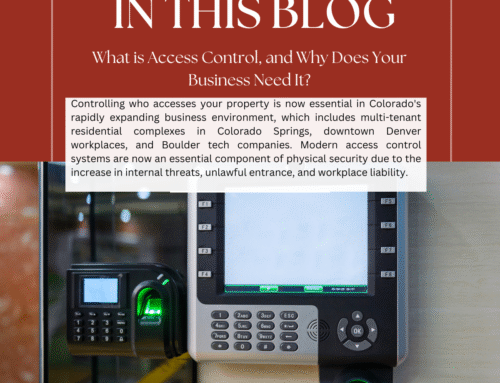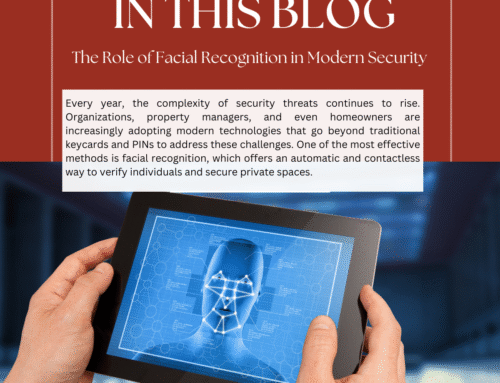How Secure Are Your Smart Cameras? Protecting Yourself from Hackers
How Secure Are Your Smart Cameras? Protecting Yourself from Hackers
While smart cameras improve the security of our homes and businesses, they also create new opportunities for attackers. These devices, which include everything from doorbells and baby monitors to high-resolution commercial IP cameras and cloud-connected NVRs, are attractive targets due to their network connectivity, ability to capture sensitive video, and often weak default security measures. This article outlines how these cameras can be compromised, the real dangers associated with them, and provides a step-by-step guide on how to protect your system.
Why Smart Cameras Are An Attractive Target
Attackers target cameras for three reasons:
- Constant access to private information. Cameras broadcast audio and video from private areas, making them ideal for extortion or espionage.
- Insecure by default. A lot of devices come with out-of-date firmware, default passwords, or SDKs that are known to be vulnerable. Attackers can readily obtain permanent access due to weak defaults and inadequate update policies. This is a problem that affects the whole sector, according to research and reports from the past few years.
- Beneficial for more extensive assaults. Compromised cameras can be used as spying tools for physical crimes, pivot points into networks, or components of botnets (used in DDoS assaults). IoT devices have been one of the most targeted sectors in recent years, according to industry surveys.
Common Attacks On Cameras
- Default or weak passwords: Attackers attempt to use credential lists or popular usernames and passwords. Among the simplest approaches is this one.
- Unpatched firmware and susceptible SDKs: In the past, millions of video feeds have been made public due to flaws in camera firmware or third-party SDKs. A model may continue to be vulnerable indefinitely if the maker ceases upgrading it.
- Cloud account takeover: Cloud accounts and applications are used by a lot of cameras. Attackers can access live broadcasts or cloud-stored video if your account credentials are weak or your email is phished.
- Man-in-the-middle (network) attacks: Anyone with network access can intercept unprotected local networks or cameras that don’t encrypt broadcasts.
- Supply-chain and firmware tampering: Attackers can gain extensive control through less frequent but significant compromised supply chains or malicious firmware upgrades.
How Significant Is the Issue? An Overview of Current Data
According to independent cybersecurity research and industry reports, billions of IoT attacks and millions of vulnerable devices were analyzed during 2024 and 2025. Attacks on IoT devices continue to be a rapidly growing concern. A comprehensive IoT security assessment in 2025 revealed millions of vulnerabilities and billions of assaults on IoT devices.
In 2024, experts found that attackers were more likely to target remotely controlled IoT devices, such as cameras, compared to other categories. Companies reported daily attacks on cameras and building control systems, highlighting the risks faced by both households and businesses.
Historical large-scale incidents, such as SDK-level vulnerabilities that exposed tens of millions of feeds, illustrate how a single weakness in vendor software can have far-reaching consequences.
A useful checklist: Protect your cameras right now.
Follow these instructions in sequence to significantly reduce risk through small adjustments:
- Change Default Credentials: Immediately replace default usernames and passwords. Ensure that every camera and cloud account has a strong, unique password. Consider using a password manager or creating passphrases. This single action can prevent many common break-ins.
- Enable Two-Factor Authentication (2FA): Activate 2FA for both your camera vendor account and the associated email. This security measure helps prevent the majority of account takeover attempts.
- Update Applications and Firmware: Turn on automatic updates if they are available. If a manufacturer stops providing support for a device, plan to replace it, as unsupported devices are more vulnerable to attacks.
- Choose Enhanced Privacy Options: When privacy is essential, opt for end-to-end encryption (E2EE) or local storage. If your camera supports E2EE for streaming, enable it. Be aware that some cloud services may be limited with E2EE is enabled.
- Segment Your Network: To prevent attackers from easily accessing your PCs or company systems, place cameras on a separate VLAN or “guest” network.
- Disable Unnecessary Functions: Turn off any features that you do not use, such as cloud recording, UPnP, remote access, and microphones. Reducing the number of active services decreases security risks.
- Implement Strong Wi-Fi Security: Use WPA2 or WPA3 with a secure access point password. Avoid open networks and the outdated WEP standard.
- Review User Access: Limit administrative privileges, remove outdated accounts, and avoid sharing passwords across multiple devices.
- Select Trustworthy Suppliers: Choose companies with a solid security track record. Look for those that adhere to secure-by-design principles, offer regular updates, conduct bug bounties and publish security policies. Consider the IoT acquisition guidelines published by U.S. authorities like CISA when making purchasing decisions.
- Monitor Alarms and Logs: Enable logging and alerts for unsuccessful login attempts or unusual activity if your system supports it, and conduct regular checks on these logs.
Indications That Your Security Camera Could Have Been Compromised
Here are several indicators that your smart security camera could have been compromised, which is a horrible sensation that is fortunately quite uncommon:
Inadequate performance
If your security camera is having trouble operating, there can be a straightforward cause, such as a weak internet signal, but you might have been compromised.
Unusual sounds or motions
Does your security camera move more than it often does? Or perhaps it’s operating slowly, or you’re hearing odd clicks, beeps, or perhaps a voice you don’t recognize? These might indicate that your webcam is being controlled by an unauthorized individual.
LED lights that flicker
You may have been hacked if you see your camera’s indicator lights flickering or abruptly shutting off.
Login issues
Someone may have gotten access to your network or attempted to do so if your password isn’t working or you notice an unknown user on your account.
Notifications or modifications to the settings
Do you notice any modifications to the settings that you did not make? Or did you receive alerts about things you failed to do? It’s possible that your camera was hacked.
Increased use of data
Examine the latest data usage on your network. A hacker may be moving video from your camera if it’s significantly higher than normal.
Home vs. business: different priorities
- Home users: Pay attention to modifying defaults, turning on 2FA, network segmentation (guest Wi-Fi), and privacy settings (turn off voice or cloud if not needed). Although inexpensive consumer cameras are helpful, you should also consider the vendor’s update policy.
- Businesses: Need more robust controls, such as vendor risk assessments, audit trails, centralized administration for firmware upgrades, dedicated VLANs, stringent access control, and log/retention rules. Ensure that applicable privacy laws and retention regulations are followed in regulated situations.
Legal and privacy notes
Each country has different laws about recording and consent. Recording individuals in private locations (such as restrooms or changing rooms) without permission or recording audio without prior notice is prohibited in many countries. Observe local privacy laws and signage if your cameras record areas that are visible to the public. Additionally, you could be required by local data-breach legislation to notify others in the event of a breach; find out what your area’s legal requirements are or get legal advice.
Frequently Asked Questions
Is it possible for hackers to view my camera in real time?
A: If broadcasts aren’t encrypted, the device has unpatched vulnerabilities, or your camera account has been hacked. The majority of takeovers occur as a result of obsolete firmware or weak credentials.
Is local storage more secure than cloud storage?
A: If the provider employs robust encryption, effective access restrictions, and solid operational security, cloud storage can be safe. However, vulnerability is increased via the cloud (remote access points). Although local storage restricts remote access, it can be lost if the local system isn’t backed up or if the device is stolen.
What about purchasing the least expensive camera available?
A: Cheaper devices frequently reduce expenses by sacrificing robust engineering and secure update processes. Choose suppliers who have clear security procedures and update promises if privacy and security are important to you. Vendor evaluation can be aided by CISA guidelines.
Do cameras require antivirus software?
A: Desktop antivirus software is not used by cameras, which employ embedded operating systems. Rather, concentrate on firmware upgrades, device hardening, and network restrictions.
How can I determine whether my camera has been compromised?
A: Unusual network activity from the device, abnormal recordings or uploads, sudden reboots, and unknown accounts are all warning signs. If you suspect compromise, review vendor support guidelines and think about changing credentials and doing a factory reset.
Conclusion:
Security is ongoing rather than “set and forget.”
If we approach smart cameras like the networked gadgets they are, they can be very effective tools. The good news is that eliminating many dangers is easy. Modify settings, turn on 2FA, upgrade firmware, divide networks, and select suppliers who put security first. Camera systems should be considered an integral element of a company’s cyber risk program rather than an afterthought.



